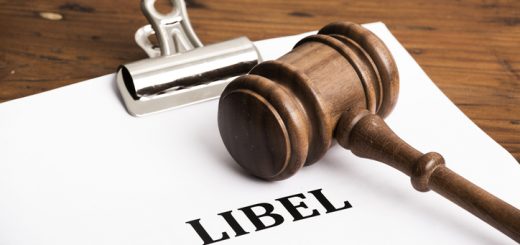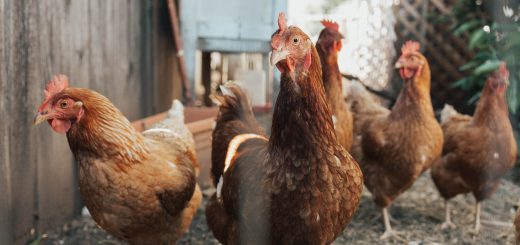Cusson v Quan: The Responsible Journalism Defence?
The traditional Canadian law of defamation has, itself, developed a bad reputation. While some commentators have gone so far as to call it a “mausoleum of antiquities peculiar to the common law and unknown elsewhere in the civilized world…a labyrinth of uncertainties, of false clues, blind alleys, and unexplored passages,” others have been kinder, simply labelling the law of defamation “notoriously complex and difficult.”
Among other things, of growing concern is our courts’ approach to the “qualified privilege” defence and the proper place to be accorded to responsibly-made journalistic expression within Canada. As it stands, the balance between free expression on one hand and the protection of an individual’s reputation on the other leans heavily in favour of the latter, and leaves a veritable “chill” on journalistic activity.
A New Opportunity
This state of affairs, however, might change next month when the Supreme Court of Canada (“SCC”) considers Cusson v Quan, a landmark decision by the Ontario Court of Appeal (“ONCA”) (see 2007 ONCA 771). In its ruling, the ONCA provides both a clear-cut diagnosis of the current state of the law, and the foundations for a newly recognized Canadian approach to responsibly-made journalistic expression.
As noted by Sharpe J., writing on behalf of the Court of Appeal, the traditional law of defamation provides for a version of strict liability. A defendant may neither escape liability by proving a lack of intention to defame, nor by proving that reasonable care had been taken to ascertain truthfulness. Nor, for that matter, might a defendant argue that they were merely repeating the statement of someone else. Within this scheme, any statement made by a defendant to a third person that would lead ordinary Canadians to think less of the plaintiff is presumptively defamatory: “[t]he common law presumes falsity, fault and damages.”
Common Law Impediments
Such a prima facie handicap would not be terribly disturbing if it weren’t for three other common law impediments to media defendants. First, in Douglas v Tucker, [1952] 1 SCR 275, and The Globe and Mail Ltd v Boland, [1960] SCR 203, the SCC ruled that the reciprocal relationship of duty and interest, which is inherent to the traditional qualified privilege defence, is not generally applicable to the media. In other words, the courts do not recognize defendant newspapers as having a duty to report matters of public interest to the world at large.
The second hurdle to defendants is that while the defence of “fair comment” may attach to defamatory statements of opinion, it provides no defence in relation to the publication of defamatory statements of fact, no matter how reasonably believed to be true. Put otherwise, when it comes to publication of defamatory facts (i.e. facts that would lead the ordinary person to think less of the plaintiff) newspaper defendants can only avoid liability by proving the truth of those facts according to the exacting standards of a court of law.
The last and final hurdle to media defendants facing allegations of defamation is the SCC’s ruling in Hill v Church of Scientology of Toronto, [1995] 2 SCR 1130. Although Hill dealt with a different aspect of defamation, the Supreme Court flatly rejected the argument that the present law of defamation is unconstitutional, and that the American “actual malice” approach should be adopted as a remedy. As laid down in the leading American case, New York Times v Sullivan, 376 US 254, the “actual malice” test bars public officials from recovering damages for defamation if they are unable to prove actual malice on the part of the publisher. Considering that malice is exceptionally difficult to prove, the adoption of such a test would have firmly swung the balance between reputation and free speech in the other direction.
The ONCA Decision
Sharpe J.A. was unequivocal in his assessment of the effect of these hurdles. The current approach to defamation in Canada relies on a line of cases developed “some fifty years ago in a very different legal context, one that gave preponderant consideration to the protection of reputation…[they] bear the mark of the pre-Charter past, an era less concerned about the right of free expression and the need for open, vibrant political debate.”
Having made his diagnosis, Sharpe J.A. then proposed a well-conceived cure: the adoption of a new defence recently developed by the House of Lords. Established in Reynolds v Times Newspapers Ltd and Jameel v Wall Street Journal, this development is not so much an extension of qualified privilege, as a “different judicial creature” altogether.
The defence, labelled by Sharpe J.A. as “the public interest responsible journalism defence,” rests on a sound principle: if a media defendant can show that when publishing a story of public interest it had acted according to the standards of responsible journalism, it has a defence, even if it was mistaken in some of its facts. This defence is different from traditional qualified privilege in that it imposes a burden on the defendant to show that it acted responsibly, whereas qualified privilege imposes a burden on the plaintiff to prove malice.
According to Sharpe J.A., the public interest responsible journalism defence is a logical mid-way between two common law extremes; “[it] recognizes that in relation to matters of public interest, the traditional common law unduly chills freedom of expression but, at the same, rejects the notion that media defendants should be afforded a licence to defame unless the innocent plaintiffs can prove deliberate or reckless falsehood.”
Certainly, as far as the Ontario Court of Appeal is concerned, a public interest responsible journalism defence would go a long way towards righting the common law imbalance in favour of reputation over free speech.
It’s hard not to agree.







Join the conversation